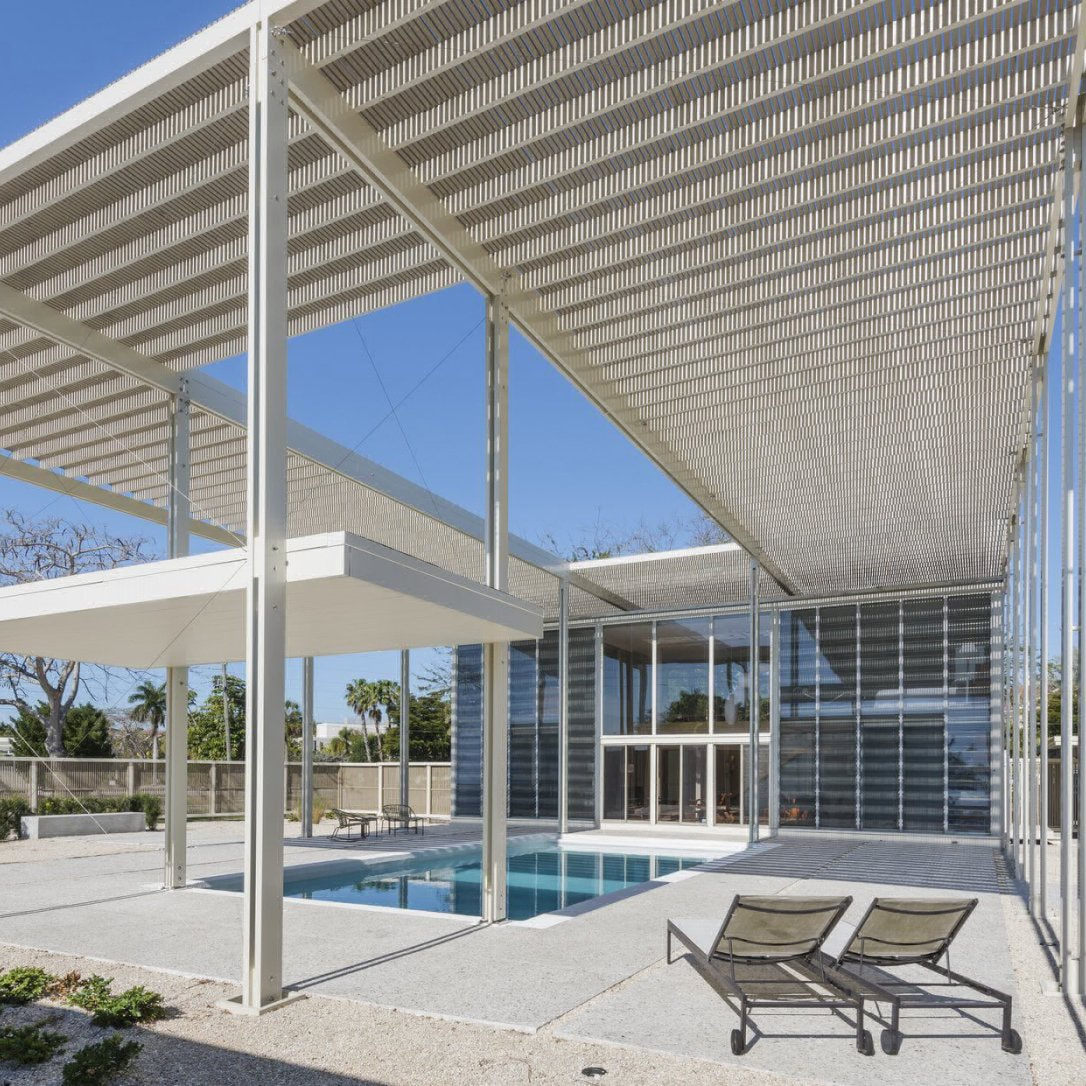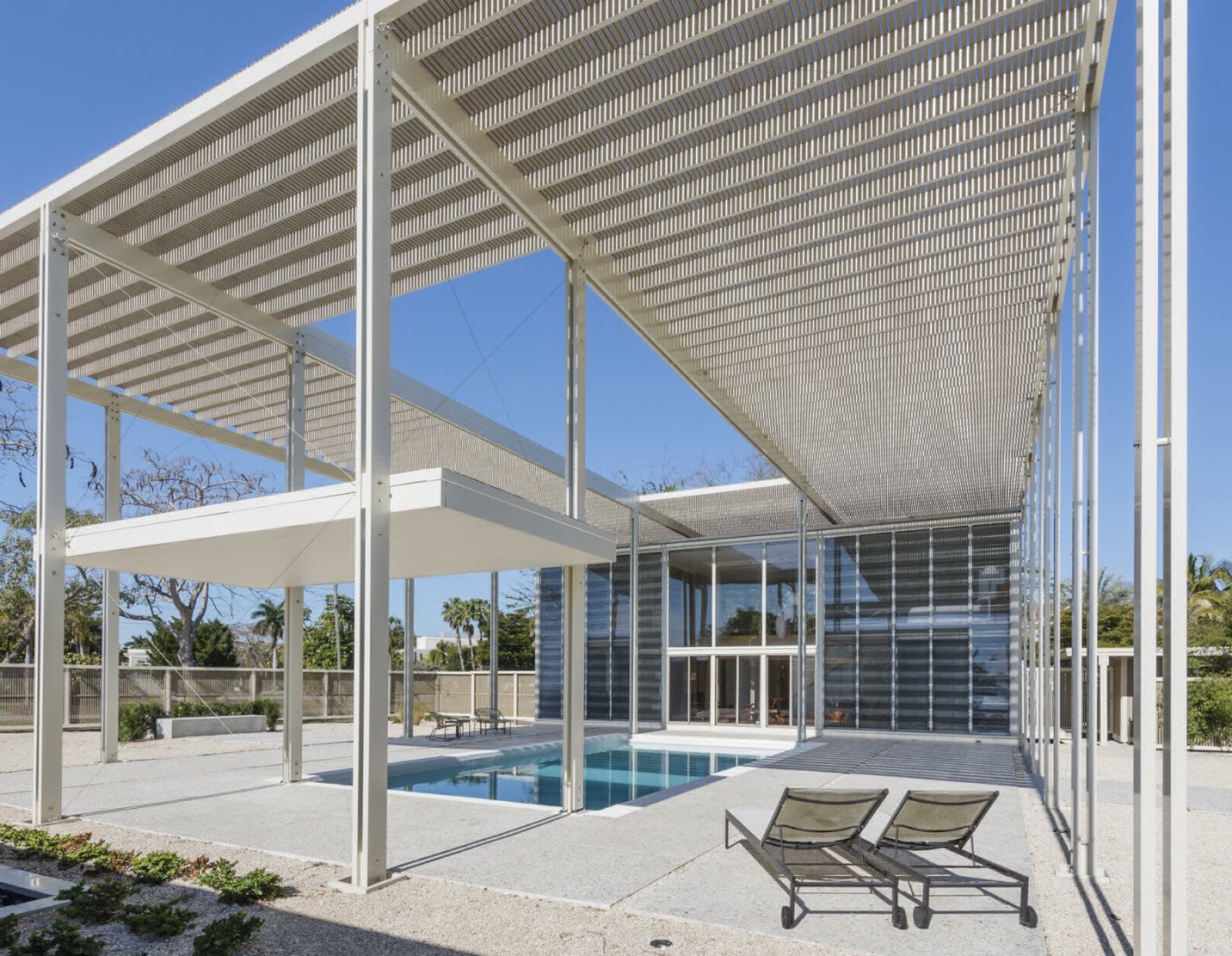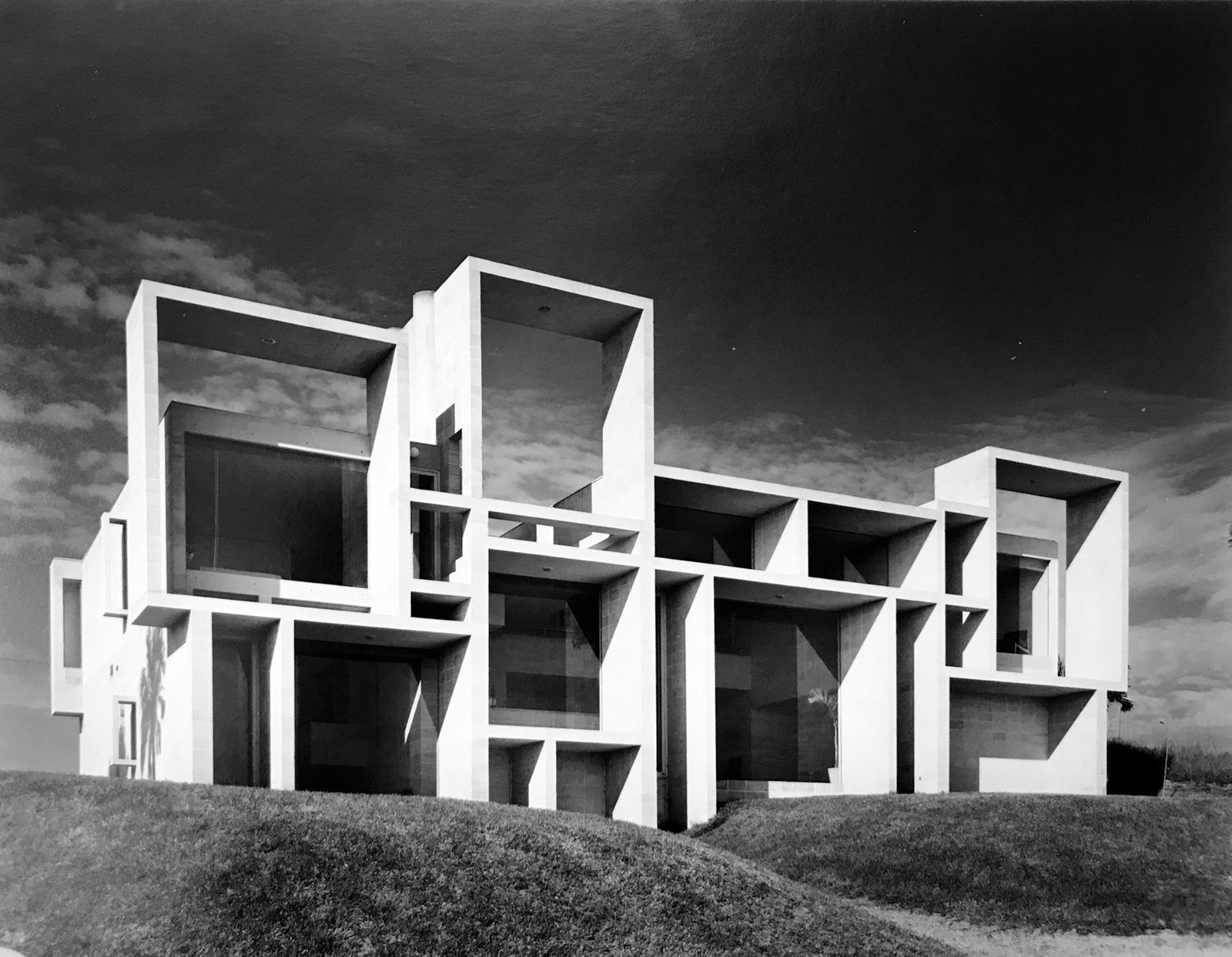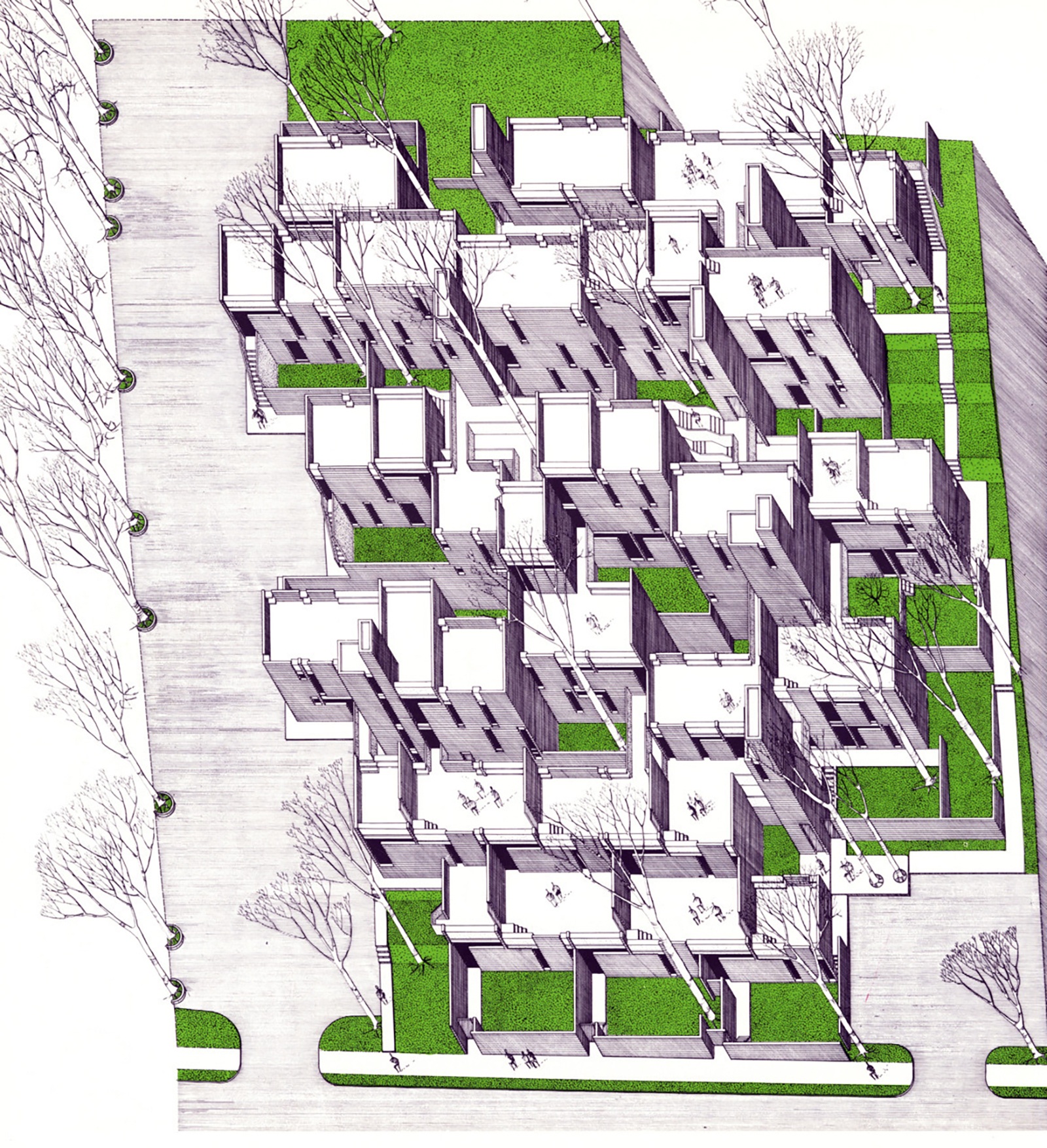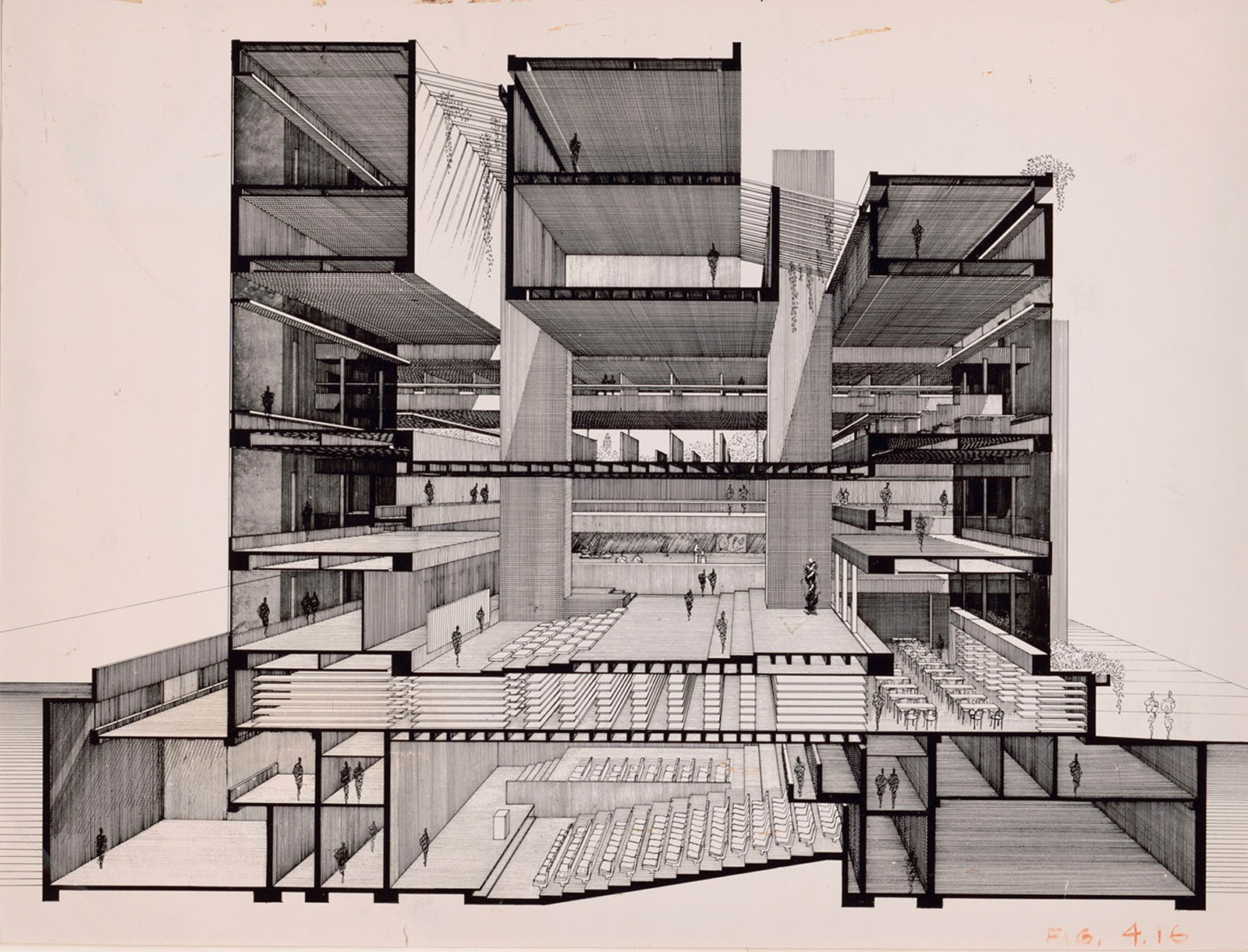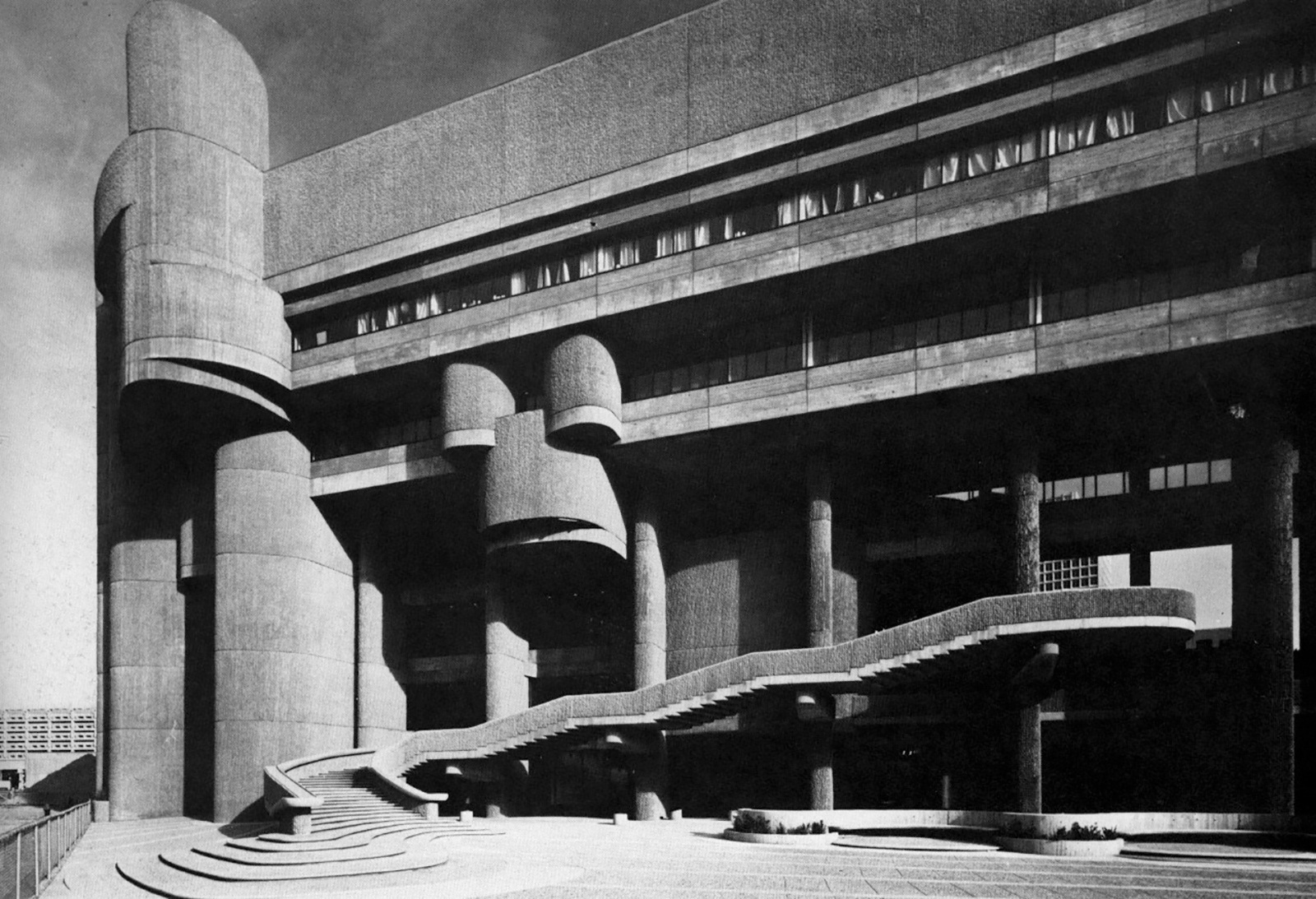A student of Walter Gropius, and a teacher to Norman Foster and Richard Rogers, Paul Rudolph was one of the most original modernist architects. During the Second World War he served in the Navy supervising ship construction and later adapted materials and techniques used in shipbuilding to civil construction.
The houses Rudolph designed in the 1950s for the coast of Florida set a new standard of luxury living. His own drawing skills and his friendship with photographer Ezra Stoller helped convey the seductiveness of the new aesthetics to the broader public.
As he gained acclaim, Rudolph moved away from luxury glass mansions toward monumental public buildings of reinforced concrete, offering an alternative to the faceless corporate international style with its curtain walls.
Yale Art and Architecture Building that Rudolph designed when he became the chairman of the Yale Department of Architecture in 1958 looks like a concrete castle with towers but is at the same time open, functional and user-friendly.
Similarly, his Government Service Center in Boston looks monumental on the outside but is developed with humans in mind and features many fascinating details in its yard and interior. Its monumental quality was meant to convey the importance of government service and the scale of civil support, while the curved interior with contrasted textures was designed to be more human than the usual strict environments of administrative buildings. By 1971, when its construction was complete, the social situation had changed: the ambitions of the Great Society were left behind. Lacking in maintenance, the building became one of the most hated in the city.
Over the 1980s and 1990s Rudolph was no longer popular, and when remembered at all, he was brought up as a bad example. However, as the wave of postmodernism subsided, his work was revisited and today Paul Rudolph is listed among the greatest architects of the second half of the twentieth century.

